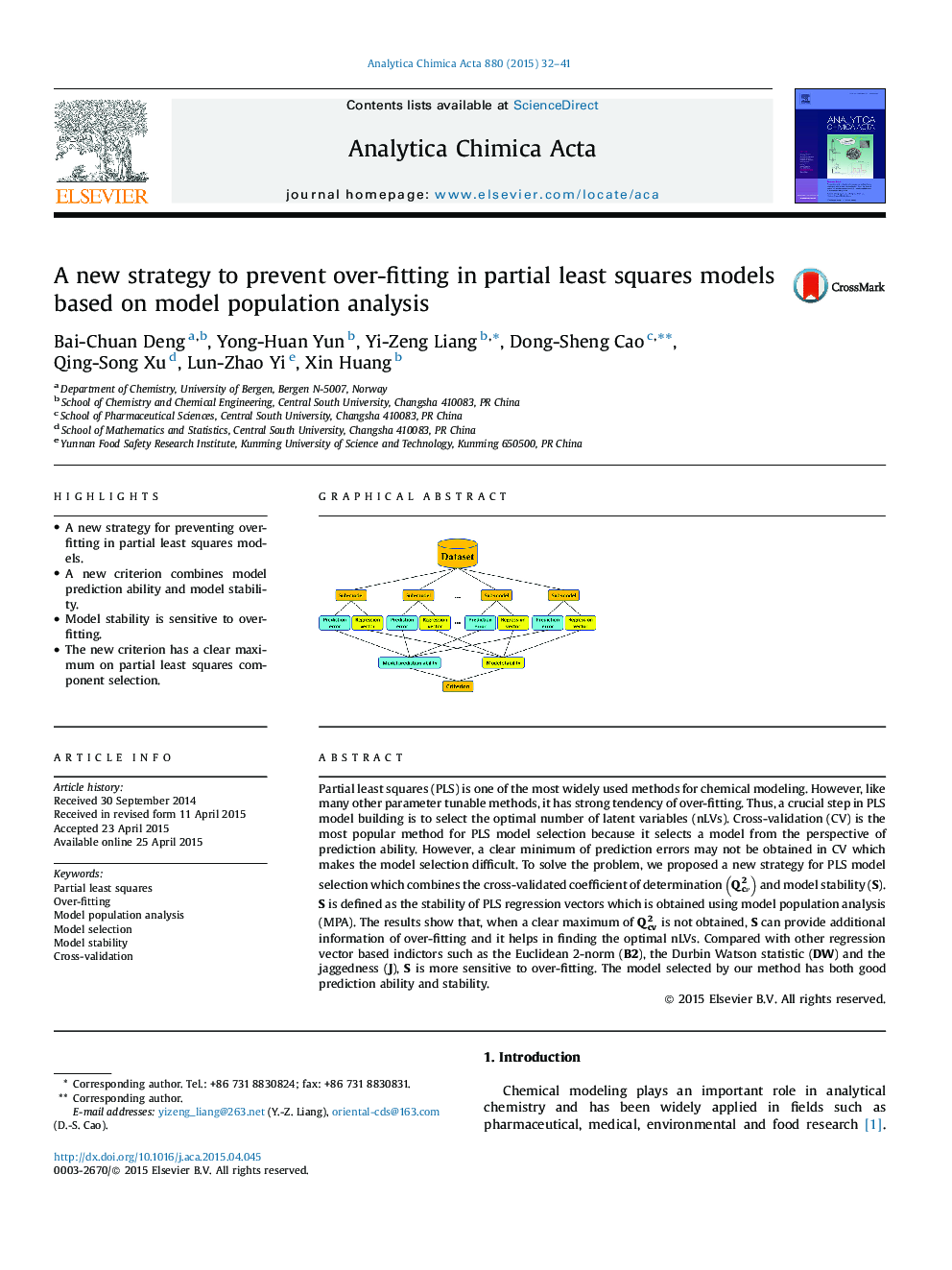| Article ID | Journal | Published Year | Pages | File Type |
|---|---|---|---|---|
| 1163286 | Analytica Chimica Acta | 2015 | 10 Pages |
•A new strategy for preventing over-fitting in partial least squares models.•A new criterion combines model prediction ability and model stability.•Model stability is sensitive to over-fitting.•The new criterion has a clear maximum on partial least squares component selection.
Partial least squares (PLS) is one of the most widely used methods for chemical modeling. However, like many other parameter tunable methods, it has strong tendency of over-fitting. Thus, a crucial step in PLS model building is to select the optimal number of latent variables (nLVs). Cross-validation (CV) is the most popular method for PLS model selection because it selects a model from the perspective of prediction ability. However, a clear minimum of prediction errors may not be obtained in CV which makes the model selection difficult. To solve the problem, we proposed a new strategy for PLS model selection which combines the cross-validated coefficient of determination (Qcv2) and model stability (S). S is defined as the stability of PLS regression vectors which is obtained using model population analysis (MPA). The results show that, when a clear maximum of Qcv2 is not obtained, S can provide additional information of over-fitting and it helps in finding the optimal nLVs. Compared with other regression vector based indictors such as the Euclidean 2-norm (B2), the Durbin Watson statistic (DW) and the jaggedness (J), S is more sensitive to over-fitting. The model selected by our method has both good prediction ability and stability.
Graphical abstractFigure optionsDownload full-size imageDownload as PowerPoint slide
